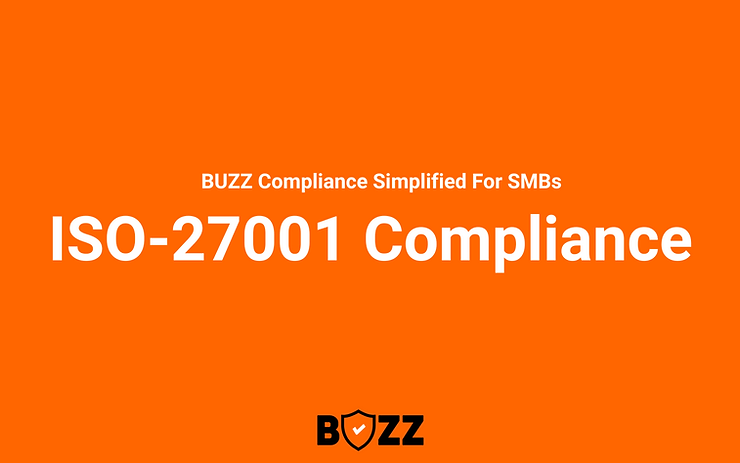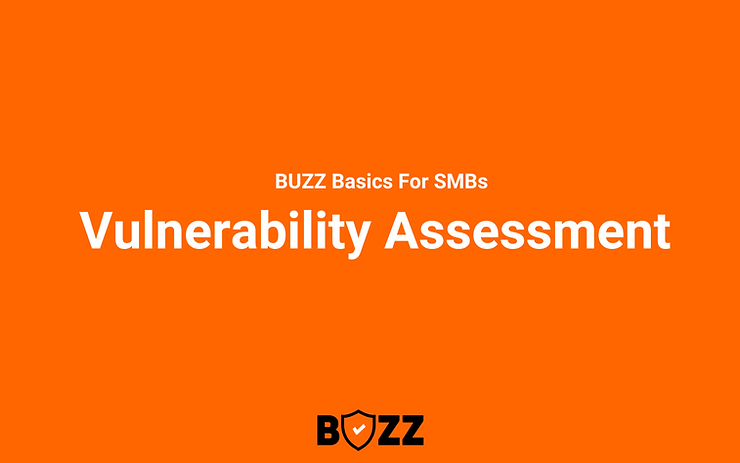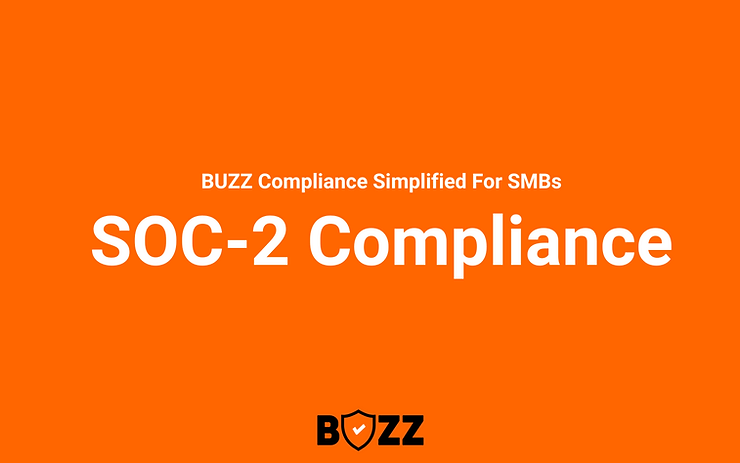Demystifying ISO-27001 for Small and Medium-sized Businesses
In today’s digital landscape, where data breaches and cyber threats are increasingly prevalent, safeguarding sensitive information has never been more crucial for Small and Medium-sized Businesses (SMBs). ISO-27001 offers a robust framework for managing and protecting data. But what exactly is ISO-27001, and why is it a game-changer for SMBs?
ISO-27001 is an internationally recognized standard for information security management. It provides a comprehensive set of guidelines and best practices for establishing, implementing, maintaining, and continually improving an Information Security Management System (ISMS). Compliance with ISO-27001 demonstrates a commitment to data security, which can be a significant differentiator in the marketplace.
However, the journey to ISO-27001 compliance can seem daunting, especially for SMBs. This is where our blog steps in. Our goal is to demystify ISO-27001 for SMBs, breaking down the standard into digestible, actionable steps. We aim to simplify the compliance process while ensuring that the depth and integrity of the standard are not compromised. Through this blog series, we will navigate each section of ISO-27001, offering practical insights and tips tailored for SMBs.
What Can You Expect
Understanding the Core Criteria of ISO-27001: A Deep Dive for SMBs
Annex A: Understanding the Security Controls in ISO-27001 for SMBs
Integrating ISO-27001 into Engineering Practices for Compliance
When to Start Your Journey Towards ISO-27001 Compliance
Understanding the Core Criteria of ISO-27001: A Deep Dive for SMBs
ISO-27001 is structured around several key criteria, each playing a pivotal role in establishing a robust Information Security Management System (ISMS). For Small and Medium-sized Businesses (SMBs), understanding these criteria will help embed a culture of security and resilience at the heart of their operations. In this section, we’ll explore each ISO-27001 criterion in detail, providing SMBs with the knowledge and tools to implement these standards effectively.
Context of the Organization
This criterion involves understanding the external and internal factors that can impact your ISMS. For SMBs, this means identifying the specific needs of your business, including legal, regulatory, and contractual requirements. It’s about understanding your organizational context and how it shapes your approach to information security. Tailoring the ISMS to your unique business environment is crucial for effective implementation.
Leadership and Commitment
Leadership plays a critical role in the success of an ISMS. This criterion focuses on the need for top management to demonstrate leadership and commitment to the ISMS. For SMBs, this could mean allocating resources, establishing clear policies, and leading by example. A strong commitment from leadership not only drives the implementation process but also embeds a culture of security throughout the organization.
Planning
This involves identifying information security risks and opportunities, and establishing clear objectives for the ISMS. SMBs must conduct thorough risk assessments to understand their specific security vulnerabilities and develop plans to address them. This step is crucial in creating a proactive, rather than reactive, approach to information security.
Support
Ensuring adequate resources, training, and awareness are crucial for the effective functioning of an ISMS. SMBs need to ensure that their employees are well-trained and aware of their roles in maintaining information security. This also includes maintaining proper communication channels and ensuring the availability of necessary resources.
Operation
This criterion is about the actual implementation and operation of the ISMS processes. For SMBs, it involves putting the plans into action, managing information security risks, and ensuring that the ISMS is integrated into the business processes.
Performance Evaluation
Regularly evaluating the performance of the ISMS is essential. This includes monitoring, measurement, analysis, and evaluation. For SMBs, this could mean regular audits, reviews, and continuous improvement processes to ensure the ISMS remains effective and aligned with business objectives.
Improvement
The final criterion focuses on continually improving the ISMS. For SMBs, this means taking corrective actions when needed and continually updating the ISMS to cope with changes in the business environment or the threat landscape.
Each of these criteria is a building block in creating a comprehensive and effective ISMS. In the following sections, we will delve deeper into each of these criteria, offering practical guidance and insights tailored for SMBs.
Annex A: Understanding the Security Controls in ISO-27001 for SMBs
nnex A of ISO-27001 is a comprehensive framework comprising various security control sets. These controls are not mandatory but are recommended for organizations to address specific information security risks identified during their risk assessment process. For SMBs, selecting and implementing the right controls from Annex A is vital for effective risk management and compliance. Let’s explore the core requirements under each category of Annex A:
A.5 Information Security Policies (2 controls)
This section deals with establishing and reviewing the policies for information security. The core requirement is to ensure that policies are aligned with business objectives, clearly articulate the organization’s commitment to security, and are regularly reviewed and updated.
A.6 Organization of Information Security (7 controls)
These controls focus on the internal organization and the management of information security. They include aspects like defining roles and responsibilities, segregating duties to reduce the risk of unauthorized activity, and coordinating information security across the organization.
A.7 Human Resource Security (6 controls)
This category emphasizes security aspects related to employees and contractors. Core requirements include conducting background checks, ensuring employees understand their security responsibilities, and managing changes in employment.
A.8 Asset Management (10 controls)
These controls are about identifying information assets and defining appropriate protection responsibilities. Key requirements include classifying information to indicate the level of protection needed and handling assets securely.
A.9 Access Control (14 controls)
This section addresses the limitation and control of access to information. Core requirements include managing user access, ensuring users are aware of their responsibilities, and managing access rights, especially in the case of employee turnover.
A.10 Cryptography (2 controls)
The controls under this section deal with the use of cryptographic solutions to protect the confidentiality, authenticity, and integrity of information. The primary requirement is to use cryptography appropriately and effectively.
A.11 Physical and Environmental Security (15 controls)
These controls aim to prevent unauthorized physical access, damage, and interference to the organization’s information and information processing facilities. This includes secure areas, entry controls, and protection against external and environmental threats.
A.12 Operations Security (14 controls)
This category involves ensuring correct and secure operations of information processing facilities. It includes aspects like protection from malware, backup, logging and monitoring, and control of operational software.
A.13 Communications Security (7 controls)
These controls are designed to manage the security of information in networks and its protection in transit. They include network security management and information transfer policies and procedures.
A.14 System Acquisition, Development, and Maintenance (13 controls)
This section ensures that information security is an integral part of the lifecycle of IT systems. It includes security requirements of information systems, security in development and support processes, and technical review of applications after operating platform changes.
A.15 Supplier Relationships (5 controls)
These controls ensure protection of the organization’s assets accessible by suppliers. It includes addressing security within supplier agreements and monitoring supplier service delivery.
A.16 Information Security Incident Management (7 controls)
This involves ensuring a consistent and effective approach to the management of information security incidents, including communication on security events and weaknesses.
A.17 Information Security Aspects of Business Continuity Management (4 controls)
This section includes establishing, documenting, implementing, and maintaining processes, procedures, and controls to ensure the required level of continuity for information security during an interruption.
A.18 Compliance (8 controls)
The final set of controls concerns with ensuring compliance with legislative, regulatory, and contractual requirements regarding information security.
For SMBs, implementing these controls from Annex A should be a tailored process, aligning with the specific risks and needs of the business. It’s not about applying all controls but selecting those that are most relevant and effective in your specific context.
Integrating ISO-27001 into Engineering Practices for Compliance
To effectively implement ISO-27001, organizations must align their engineering and IT practices with the standard’s criteria and security controls, so is ingrained in the day-to-day operations and engineering decisions.
Context of the Organization & Asset Management (A.8)
Begin by identifying all information assets and their importance to the business. In engineering terms, this means cataloging software, hardware, data, and processes. Implement asset management tools and practices to maintain an accurate and up-to-date inventory of these assets.
Leadership and Commitment & Human Resource Security (A.7)
Leadership in engineering teams should advocate for and model good security practices. This involves regular training and awareness programs for engineers and IT staff, emphasizing the importance of security in their roles.
Planning & Risk Management
Integrate risk management into the software development lifecycle (SDLC). Use threat modeling and risk assessments at each stage of development to identify and mitigate potential security issues early.
Support & Operations Security (A.12)
Ensure that your engineering teams have the necessary resources, including secure development tools and environments. Implement and enforce secure coding practices. Regularly update and patch systems and software to protect against known vulnerabilities.
Operation & Communications Security (A.13)
Secure your communication channels and network operations. Implement network security measures like firewalls, intrusion detection systems, and secure VPNs for remote access. Encrypt sensitive data in transit to protect it from interception.
Performance Evaluation & System Acquisition, Development, and Maintenance (A.14)
Regularly review and test your security measures. Conduct security audits, penetration testing, and code reviews to evaluate the effectiveness of your security controls. Update systems and practices based on the findings.
Improvement & Cryptography (A.10)
Foster a culture of continuous improvement in security practices. Stay updated with the latest in cryptographic standards and implement them to protect sensitive data, both at rest and in transit.
Supplier Relationships (A.15)
Manage third-party risks by ensuring that suppliers and partners adhere to your security standards. Include security requirements in contracts and regularly assess the security posture of your suppliers.
Information Security Incident Management (A.16)
Develop and test incident response plans. Train engineering teams to recognize and respond to security incidents promptly.
Business Continuity (A.17)
Implement disaster recovery and business continuity plans that include data backups, system redundancies, and failover capabilities to ensure business operations can continue in the event of a security incident.
Compliance (A.18)
Stay informed about relevant legal, regulatory, and contractual requirements. Implement compliance tracking and reporting mechanisms within your engineering practices.
By mapping these criteria and controls to specific engineering practices, organizations can create a robust framework that not only meets ISO-27001 standards but also integrates security into the fabric of their operations. This approach not only aids in achieving compliance but also builds a resilient and secure organizational culture.
When to Start Your Journey Towards ISO-27001 Compliance
Deciding when to embark on the journey towards ISO-27001 compliance is a strategic decision that can significantly impact an organization’s security posture and business operations. Understanding the right timing, seeking appropriate assistance, and having realistic expectations about the duration of the process are key factors in a successful ISO-27001 implementation.
When to Start Thinking About ISO-27001 Compliance
- Business Growth and Data Sensitivity: If your organization is experiencing growth, especially if you’re handling increasing amounts of sensitive customer data, it’s time to consider ISO-27001. This standard can help manage risks associated with data security and ensure you have the right controls in place.
- Market Demand and Competitive Edge: In many industries, compliance with ISO-27001 is becoming a prerequisite for doing business. If your competitors are ISO-27001 certified or if your clients are increasingly concerned about data security, it’s prudent to start the compliance process.
- Post-Incident Response: Following a security breach or incident, organizations often realize the need for a structured approach to information security. This is a critical time to consider ISO-27001 to prevent future incidents and restore stakeholder confidence.
Who Can Help
- ISO-27001 Consultants: These are experts who specialize in guiding organizations through the ISO-27001 certification process. They can help you understand the standard, conduct risk assessments, and implement necessary controls.
- Certification Bodies: Accredited certification bodies can conduct the formal assessment required for ISO-27001 certification. They evaluate your ISMS against the standard’s requirements.
- Internal Champions: Identify and train internal team members who can lead the ISO-27001 implementation within your organization. These individuals will be crucial in driving the project and ensuring ongoing compliance.
Typical Timeframe for Compliance
- Size and Complexity: The time it takes to achieve ISO-27001 compliance varies depending on the size and complexity of your organization. For SMBs, it can take anywhere from 6 months to a year, while larger organizations may need more time.
- Preparation and Implementation: The initial stages involve understanding the standard and preparing your organization, which can take a few months. Implementing the necessary changes to your ISMS and ensuring they are effective typically takes the bulk of the time.
- Audit and Certification: Once you’re ready, an external audit is conducted. If any gaps are identified, you’ll need time to address them before the final certification is granted.
- Continuous Improvement: Remember, ISO-27001 is not a one-time effort but a continuous process of improvement. Ongoing maintenance and regular audits are required to retain the certification.
Starting the journey towards ISO-27001 compliance is a significant but worthwhile endeavor for organizations looking to enhance their information security management. By understanding the right time to start, seeking expert help, and having a realistic timeline, organizations can navigate this journey more effectively and reap the long-term benefits of being ISO-27001 compliant.
Embracing ISO-27001 for a Secure Future
For SMBs, the journey towards ISO-27001 compliance is both a challenge and an opportunity. It’s a challenge because it requires a dedicated effort to understand and implement a range of security controls and practices. However, it’s also an opportunity to strengthen your organization’s security posture, build trust with customers, and gain a competitive edge in the market.
The key takeaways from our discussion include:
- Start Early, Stay Committed: The best time to think about ISO-27001 compliance is now. Early adoption can significantly mitigate risks and prepare your organization for scalable growth.
- Seek Expert Guidance: Navigating the complexities of ISO-27001 can be daunting. Don’t hesitate to seek assistance from consultants, certification bodies, and internal champions who can provide expertise and direction.
- Integrate into Business Practices: ISO-27001 should not be seen as an external imposition but as an integral part of your business operations. Embedding its principles into your daily practices ensures long-term success and compliance.
- Continuous Improvement is Key: Achieving ISO-27001 certification is not the end of the journey. Continuous improvement and regular audits are essential to maintain compliance and adapt to evolving security threats.
As SMBs continue to play a pivotal role in the global economy, the importance of securing sensitive information cannot be overstated. ISO-27001 offers a pathway to achieving this security, ensuring that your business is not only protected against current threats but is also prepared for future challenges.
Talk to us at BUZZ for personalized guidance to navigate the complexities of GDPR Compliance.
Our team of experts is here to assist you, ensuring that your business remains resilient in the face of evolving cyber threats.
Contact BUZZ: [email protected] | LinkedIn
Your security is our priority. Let’s build a safer digital future together.
FAQs: ISO-27001 Compliance for SMBs
ISO-27001 is an international standard for information security management systems (ISMS). It provides a framework for establishing, implementing, maintaining, and continually improving information security within an organization.
For SMBs, ISO-27001 is crucial for protecting sensitive data, building customer trust, complying with regulatory requirements, and gaining a competitive advantage by demonstrating a commitment to information security.
The timeframe varies depending on the size and complexity of the organization. Typically, for SMBs, it can take anywhere from 6 months to a year to achieve compliance.
While it’s possible, it’s often beneficial to seek guidance from ISO-27001 consultants or experts, especially for navigating complex aspects of the standard and ensuring a thorough implementation.
Costs can vary widely and include expenses for consultancy, training, potential changes in IT infrastructure, the certification audit, and ongoing maintenance. SMBs should budget accordingly, considering both initial and ongoing costs.
While not legally mandatory, it’s increasingly becoming a standard expectation in many industries, especially where handling sensitive customer data is concerned.
Achieving ISO-27001 certification demonstrates to customers and partners that the organization is committed to managing information securely, thereby enhancing trust and credibility.
If gaps are identified, the organization will need to address these issues and may undergo a follow-up audit. The certification is granted once the auditor is satisfied that all requirements are met.
Yes, the certification is typically valid for three years, during which periodic surveillance audits are conducted. After three years, a re-certification audit is required.
ISO-27001 is often complementary to other standards and regulations, such as GDPR. It provides a comprehensive approach to information security that can support compliance with various regulatory requirements.




